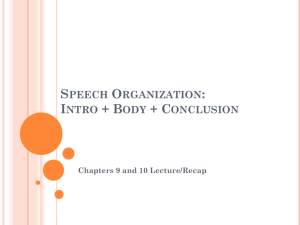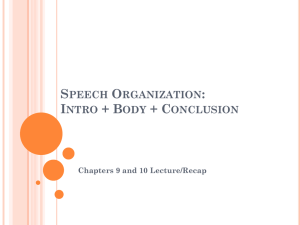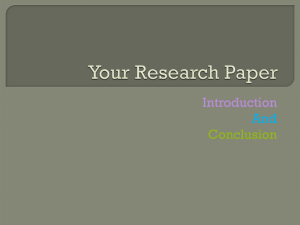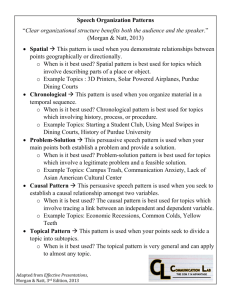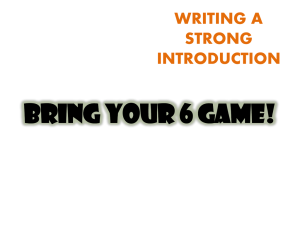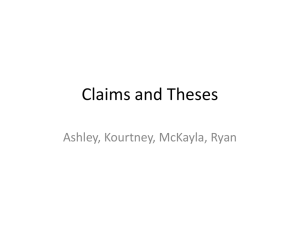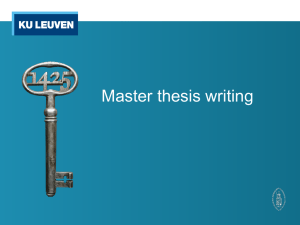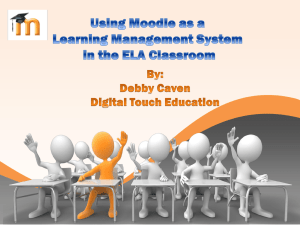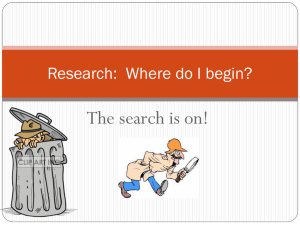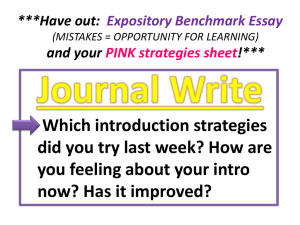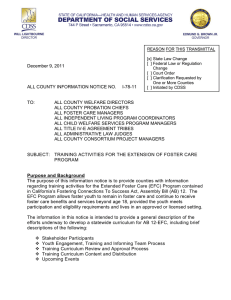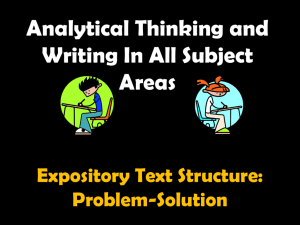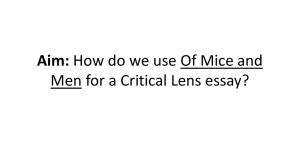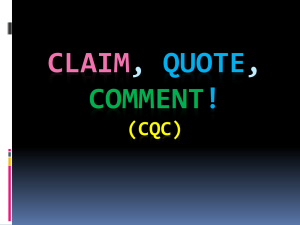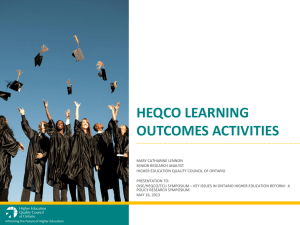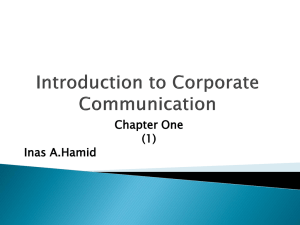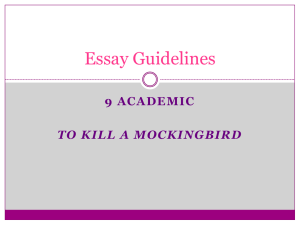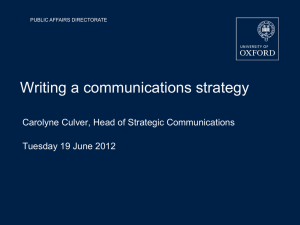Speech Organization - Gordon State College
advertisement
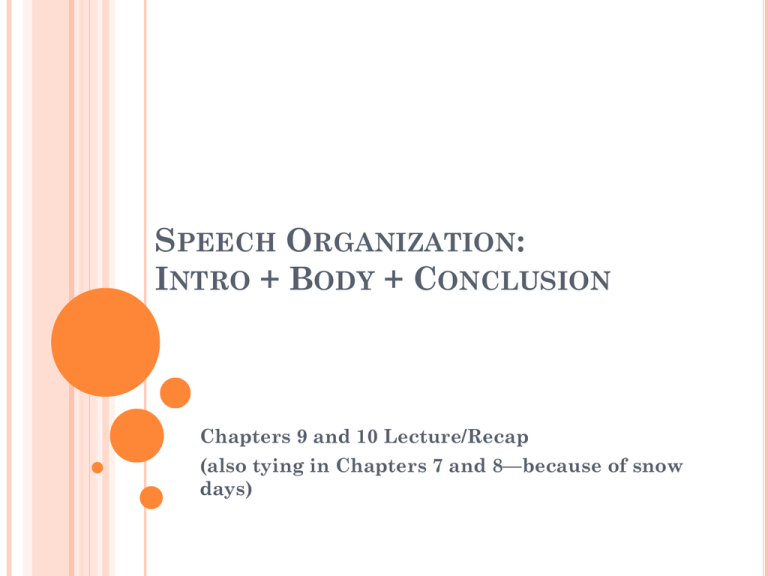
SPEECH ORGANIZATION: INTRO + BODY + CONCLUSION Chapters 9 and 10 Lecture/Recap (also tying in Chapters 7 and 8—because of snow days) WHAT DOES “STRATEGIC ORGANIZATION” MEAN? Necessary for Public Speaking? (Why/Why not?) REVIEW General Purpose: To Inform Specific Purpose: To inform my audience about… Remember—Concise. Do not include too many ideas When using “and” Is it connecting two unrelated ideas? Could the speech topic be narrowed down more? Is it concise enough? Is it detailed enough? Central idea: Thesis statement BODY OF THE SPEECH MAIN POINTS Expresses central idea Amount? Be strategic Too many? Fits time frame? Amount of time on each More complex/more supporting materials = more time Huge differences in time? Help your audience process the information Keep main points separate Similar (or recognizable) patterns Effective organization ORGANIZATION OF MAIN POINTS Chronological Spatial Causal Problem-Solution Topical EXAMPLE -Central idea: Facebook has the potential to affect the type and quality of interpersonal relationships among teenagers - Main Points: I. FB causes faster relationships to form II. FB causes conflict III. FB limits face-to-face interaction EXAMPLES Chronological Order (follows time pattern) Main Point 1 – First, individuals add friends and have minimum communication Main Point 2 – Overtime, individuals begin to communicate more through FB messaging EXAMPLES Spatial Order (follows a directional pattern) Main Point 1 – FB in high schools Main Point 2 – FB in colleges OR Main Point 1 – FB among teens in Georgia Main Point 2 – FB among teens in Maryland EXAMPLES Causal Order (presents cause-effect relationship) Main Point 1: FB causes less face-to-face interaction Main Point 2: People use FB more for discussing problems rather than using spoken messages. Main Point 3: This affects the way in which teens can communicate effectively outside of technology EXAMPLES Problem-Solution (self explanatory) Main Point 1: Research shows FB has led to bullying Main Point 2: People argue that FB should launch an anti-bullying campaign EXAMPLES Topical Order Main Point 1: FB and friendships Main Point 2: FB and romantic relationships Main Point 3: FB and family WHAT WOULD BE THE BEST ORGANIZATIONAL PATTERN? Informing audience about unemployment rates across the US Informing audiences on the application process for Financial Aid Informing audiences on the effects of smoking Informing audiences about the different academic programs at Gordon USING YOUR SUPPORTING MATERIALS Remember: Examples, stats, and testimony— three common types Must support your main ideas, which support your central idea/thesis Must organize your supporting material Will fit in as sub-points/minor points CONNECTIVES Helps with organization; guides your audience through your speech Transitions Internal Preview Signposts (e.g. questions) INTRODUCTIONS AND CONCLUSIONS INTRODUCTIONS Objective 1: Gain their attention and interest Make your topic relatable Explain the importance of your topic (to your audience) Startle your audience Build suspense (and their curiosity) Use rhetorical questions Use a powerful (and relevant) quote Tell a story HOW COULD YOU GAIN ATTENTION? HOW COULD YOU MAKE THIS RELATABLE? Social Security Coffee Illiteracy Laughter Steroids Blood donations INTRODUCTIONS Objective 2:Reveal your topic Objective 3: Establish credibility and goodwill Objective 4: Provide a preview of your main points ***Objective 5: Explain your central idea/thesis Is this the right spot? WHEN CREATING YOUR INTRODUCTION: Remember each objective Keep it brief Be creative While researching, look for valuable intro material Many write the introduction after their main points Practice delivering your introduction Do not write out your entire introduction; use outline format CONCLUSIONS Signal the end of the speech More creative than “In Conclusion” Reinforce the central idea/thesis Summarize your main points End with a quote End with a dramatic statement Circle back to your introduction CONCLUSIONS For your next speech, your conclusion will: Signal the end (without saying “In Conclusion”) Reinforce your central idea/Summarize your main points Provide memorable close (e.g. quote, dramatic statement, circling back to your introduction) Make sure to practice your conclusion; be creative SPEECH WORKSHOP Create a speech using the research on your topic Should have clear introduction, body, and conclusion Each person should practice with an oral citation Example: “According to a 2012 article on taxes found on IRS.com……” Example: Dr. Goldman is a professor at Gordon State College who researchers this topic. According to a research paper she wrote in 2013……” Example: “Scientist Will Scott conducted an investigation on __________. His findings were reported in Scientist Today in 2014. He found that….” Extemporaneous delivery Consider taking notes in keyword outline format Hint: will come in handy for next speech workshop Thursday class meeting—Outlining and Visual Aids Read handout on faculty webpage (with chapter) Will have speech workshop in class; will have HW/speech workshop due (see faculty webpage)
